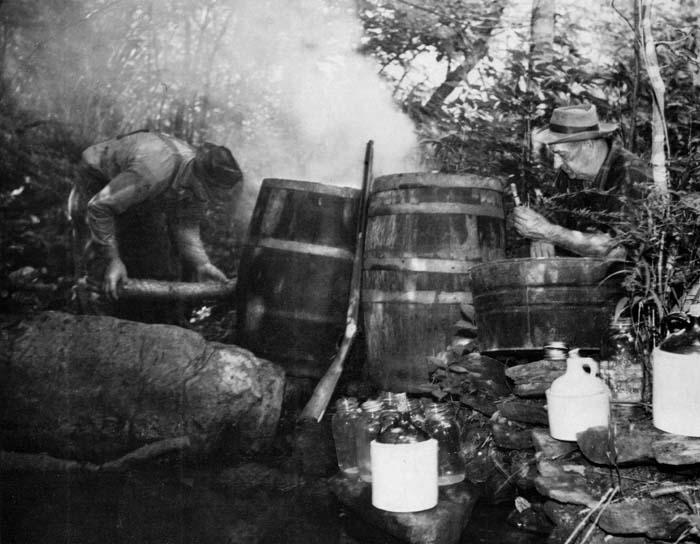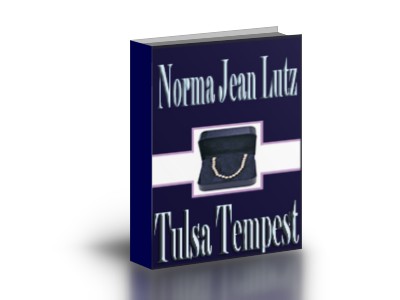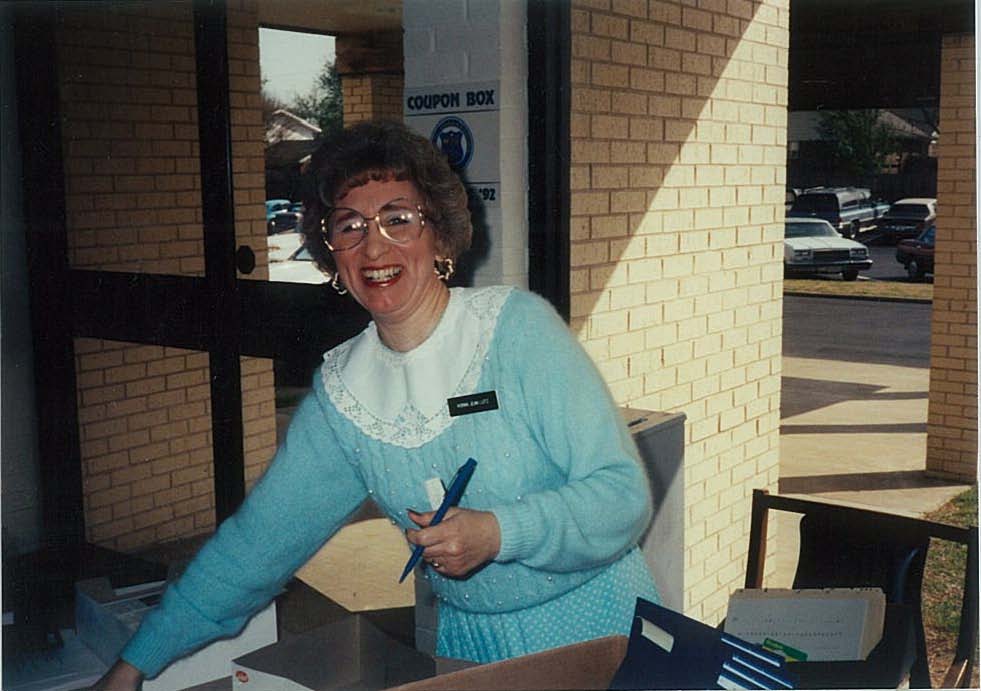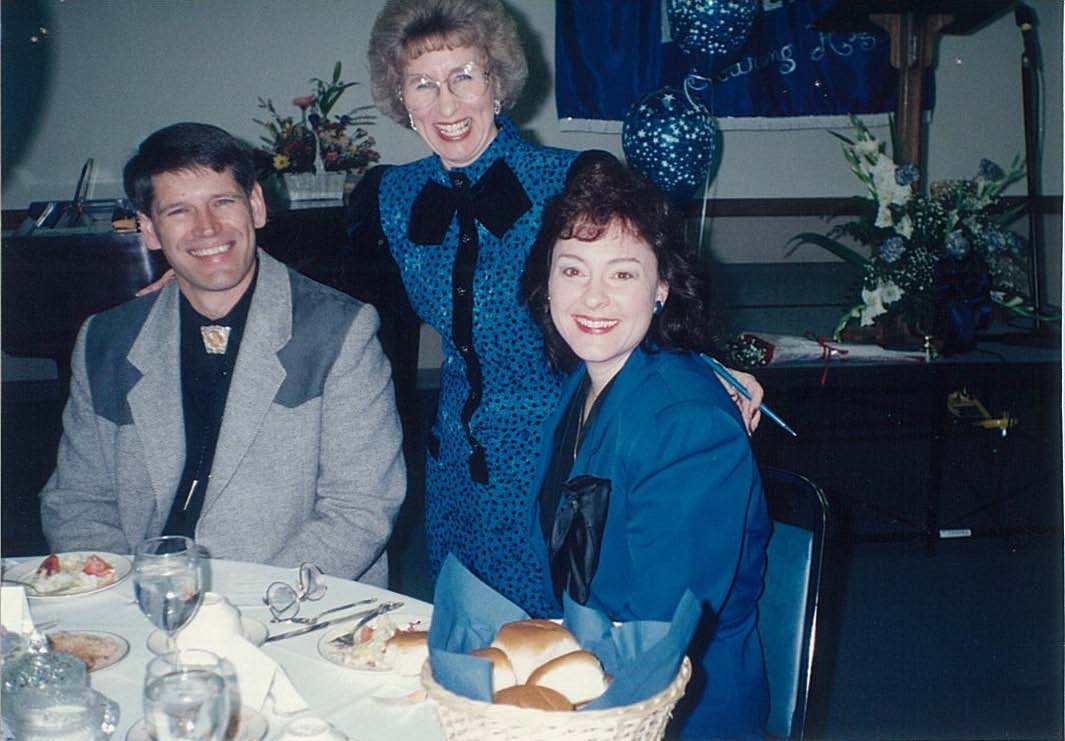In a prior blog post, I explained how it happened that I came to author the four-title Tulsa Series based on the 1921 Tulsa Race Riot. Read about it here.
Actually, a precluding incident occurred in my career that served as an powerful impetus regarding the Tulsa Series. It happened like this.
When I served as the coordinator for the Professionalism in Writing School (held annually in Tulsa), I was privileged to connect with editors, publishers, agents, and other authors from around the country. For fourteen consecutive years, PIW provided a platform where writers came to meet industry leaders and to study their craft. (That’s me at the registration desk.)
At one of our conferences, I invited Brock and Bodie Thoene as our keynote speakers. This prolific husband-and-wife writing team spoke to our group from the depths of their hearts. No one came away from that conference unchanged.
In one of her sessions, Bodie made this statement, “No matter how large or how small, every town, city, and hamlet has a story.” That statement took up permanent residence in my little brain and refused to let go.
Writing Contemporary Novels
Later, I was working with Barbour Publishing Company writing contemporary romance novels. They purchased four such novels from me, one right after the other.
All through this period of time, my editor continued to tell me that Barbour also needed historical novels. “In fact,” he told me on numerous occasions, “our need for historical novels outpaces our need for the contemporaries.”
I resisted at first, simply because I knew a great deal of research was involved in writing historicals and I wasn’t sure I wanted to tackle such a project. However, at the same time, Bodie’s remark about every town having its own story continued to haunt me.
The 1921 Tulsa Race Riot
When I first moved to Tulsa, Oklahoma as a young married, I had heard about the infamous 1921 Tulsa Race Riot. The incident had always fascinated me. (In later years, I realized that the most I heard was all fabrication.)
Not only was I interested in this local historical event, I found I was also fascinated with the era of the twenties. The jazz age – the flapper era – consisted of a revolutionary time in America’s history.
I Saw Tessa
In my head I kept seeing a scene. I saw a young girl dressed in a plain cotton housedress, carrying a basket, walking through a crowd of angry gun-toting men and into the courthouse in downtown Tulsa. That was little Tessa Jurgen, the main character in Tulsa Tempest, but I didn’t know her yet.
It was time to say yes to my editor. Once I said yes, that began an incredible journey for me back into history. And what a journey it was.
 From that point on, research was never work, it became like a treasure hunt; like a archeological dig; like mining for gold.
From that point on, research was never work, it became like a treasure hunt; like a archeological dig; like mining for gold.
For more than two years, I lived in the Tulsa of the 1920s when oil fortunes were won or lost over a poker game; when bootleggers plied their trade; when the local Klan membership numbered in the thousands; when lawlessness prevailed; when people hopped on the trolley to take a shopping trip downtown; when the black population had their own separate thriving community to the north of town called Greenwood – also known as the Black Wall Street.
A Definite Page-Turner
That was the Tulsa I came to know on an intimate level.
When all was said and done, the first book in the series, Tulsa Tempest, saw many positive reviews, one of which stated:
A definite page-turner in every sense! It’s a great historical read that is entwined with a sweet romance. ~ Romance Reader at Heart
~*~*~*~*~*~*~*~*~*~*~*~*~
 Tulsa Tempest now available on Kindle!
Tulsa Tempest now available on Kindle!
When country girl Tessa Jurgen learns that her bootlegging father has promised her in marriage to a man she doesn’t love, she seeks refuge in the supposedly progressive boomtown of Tulsa, Oklahoma. The year is 1921


